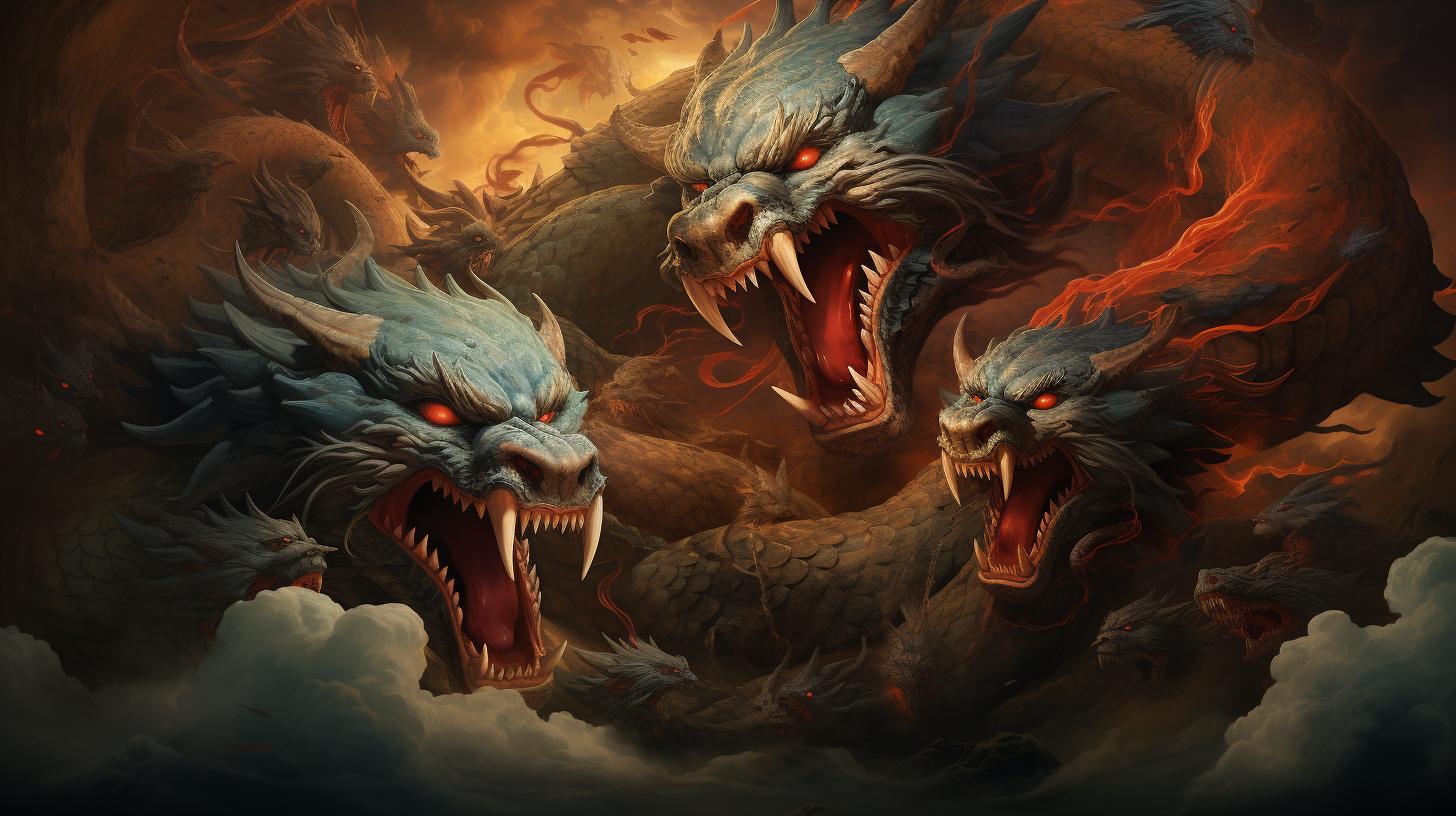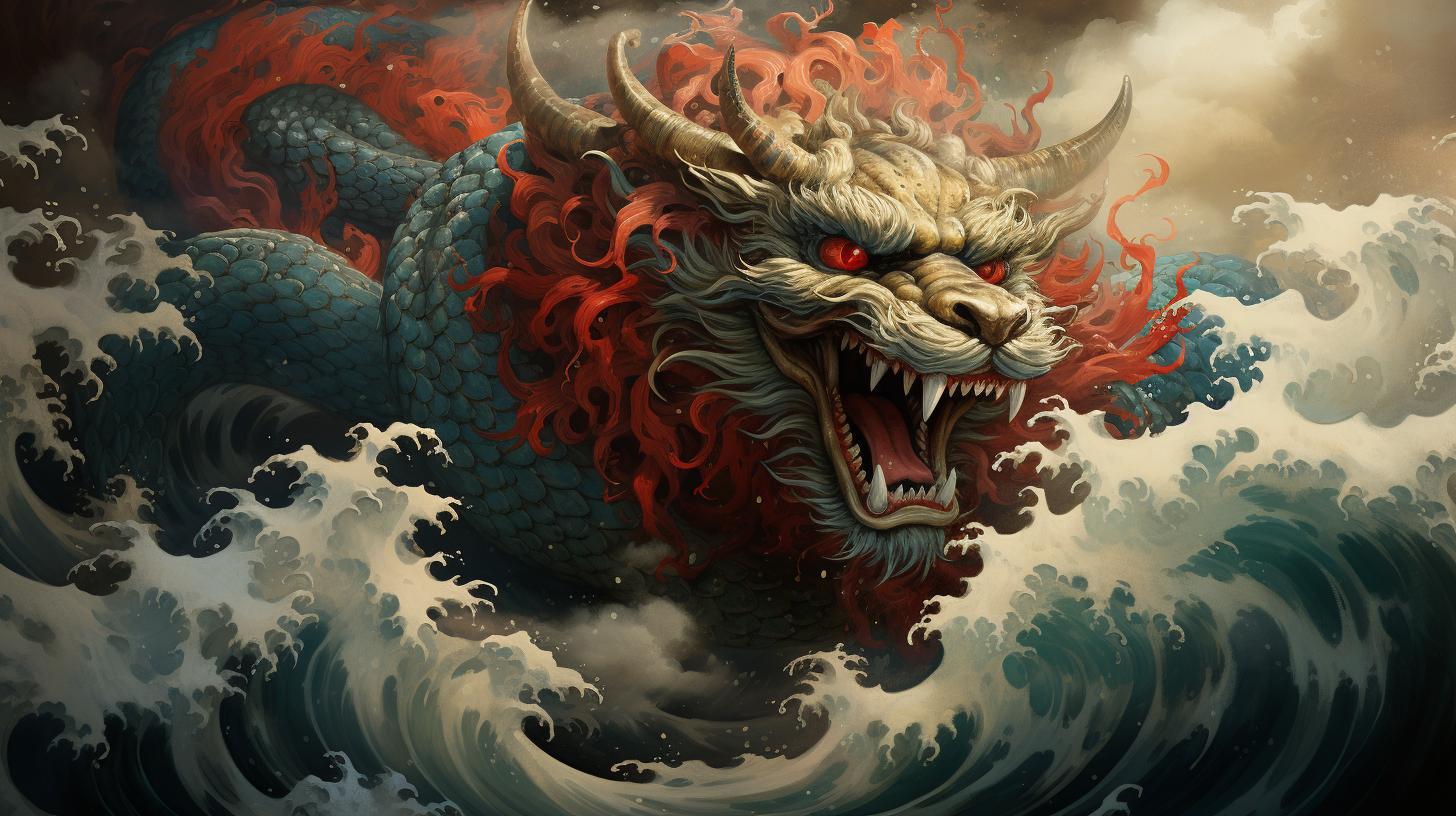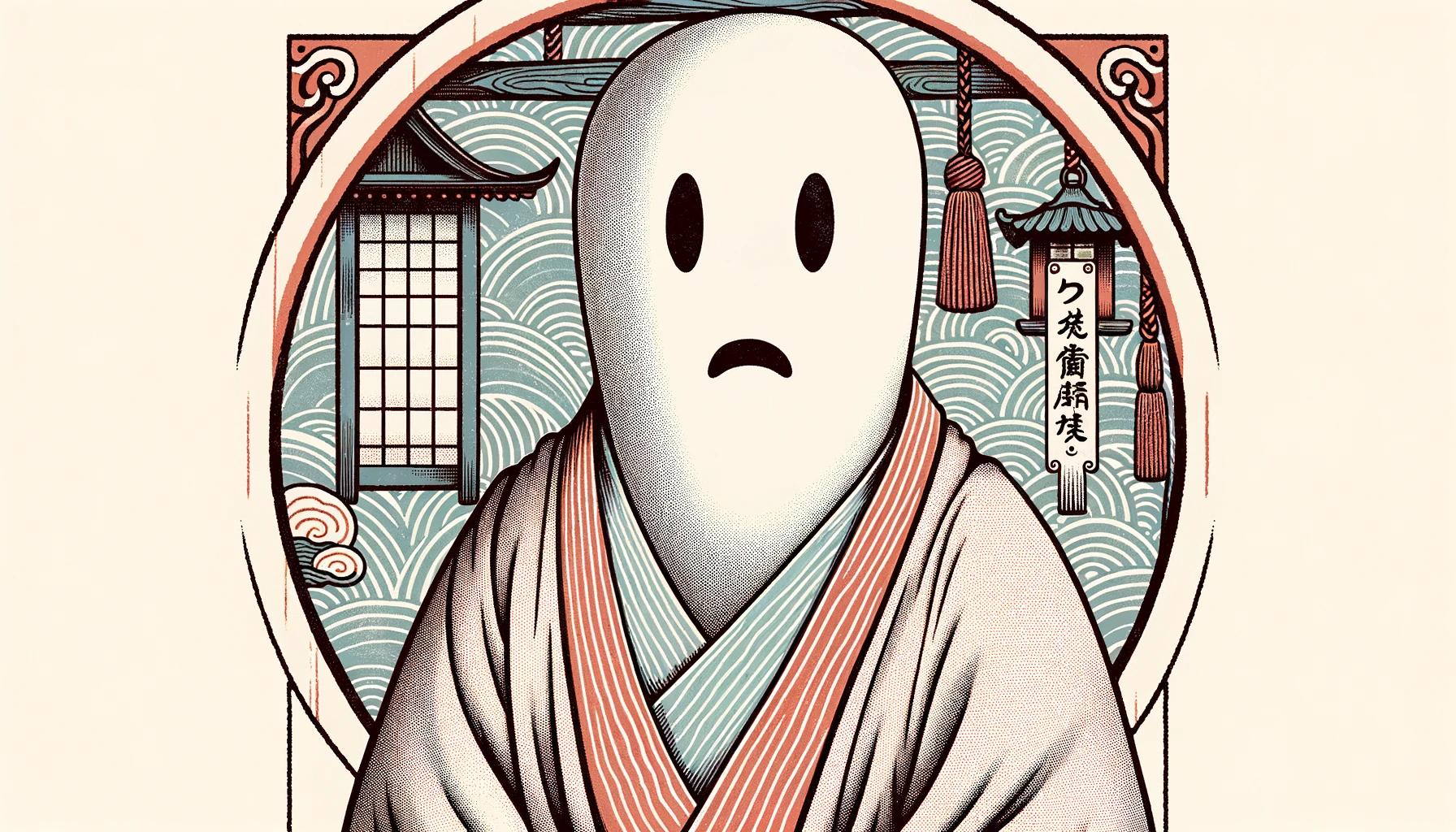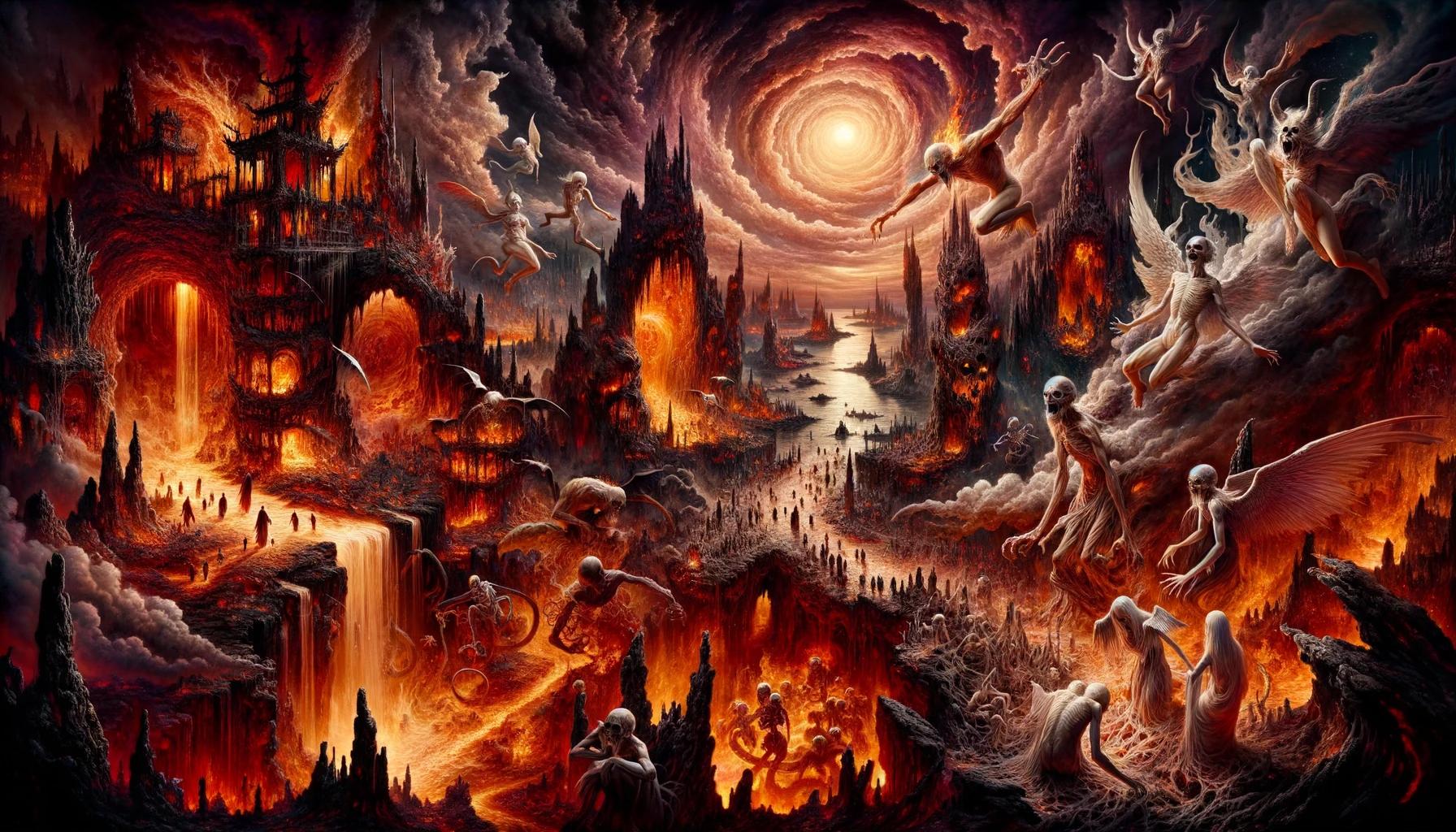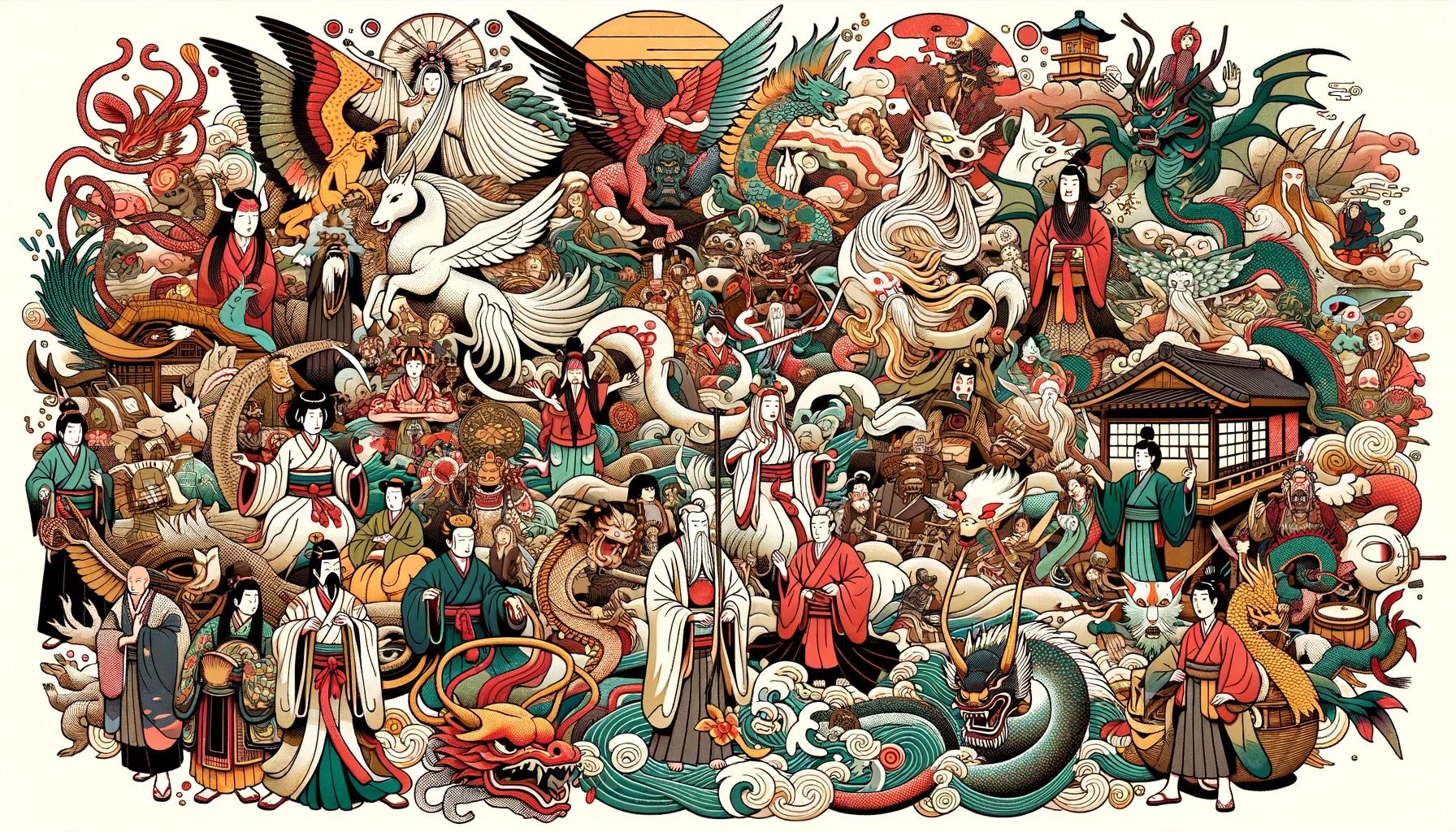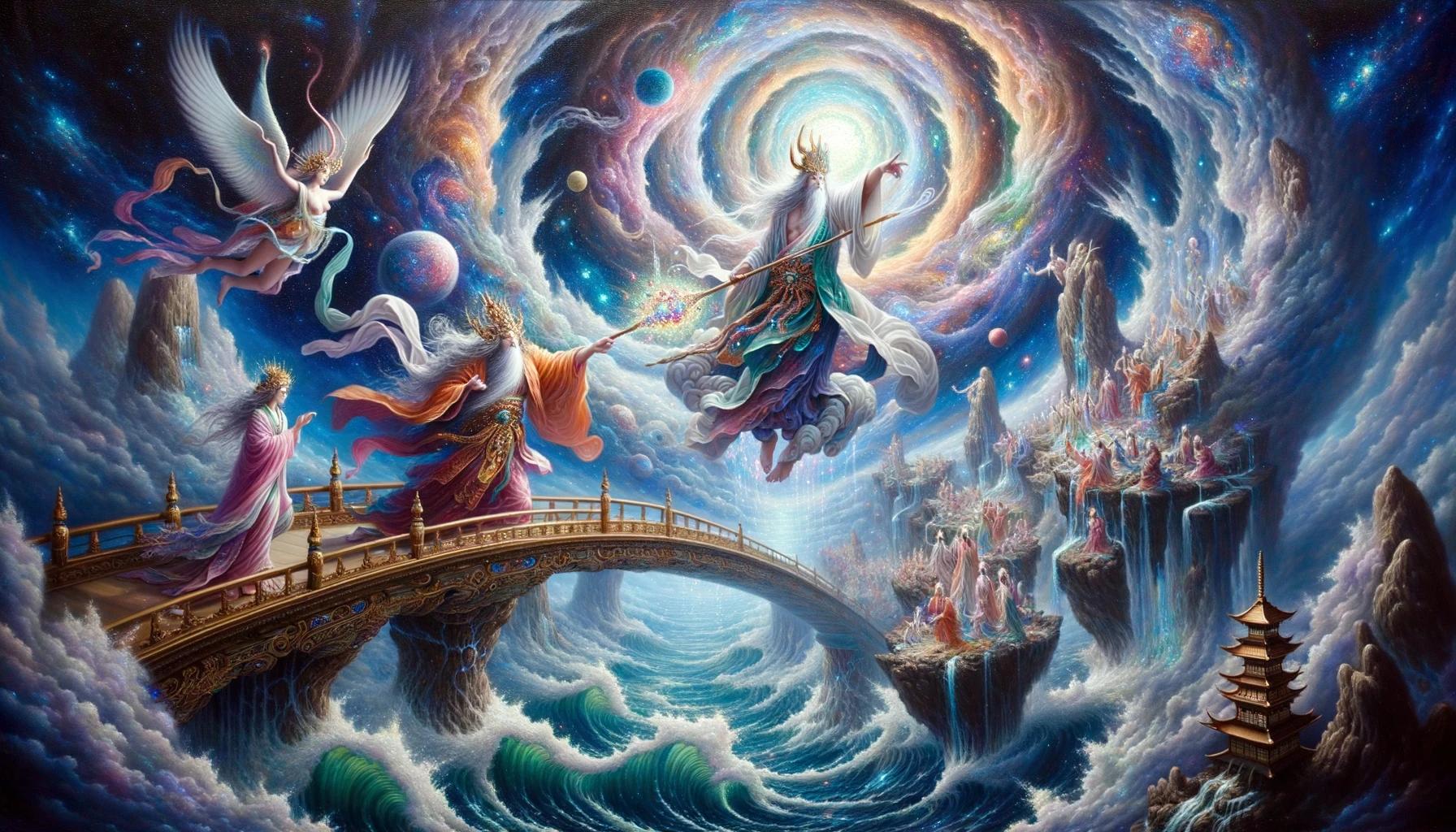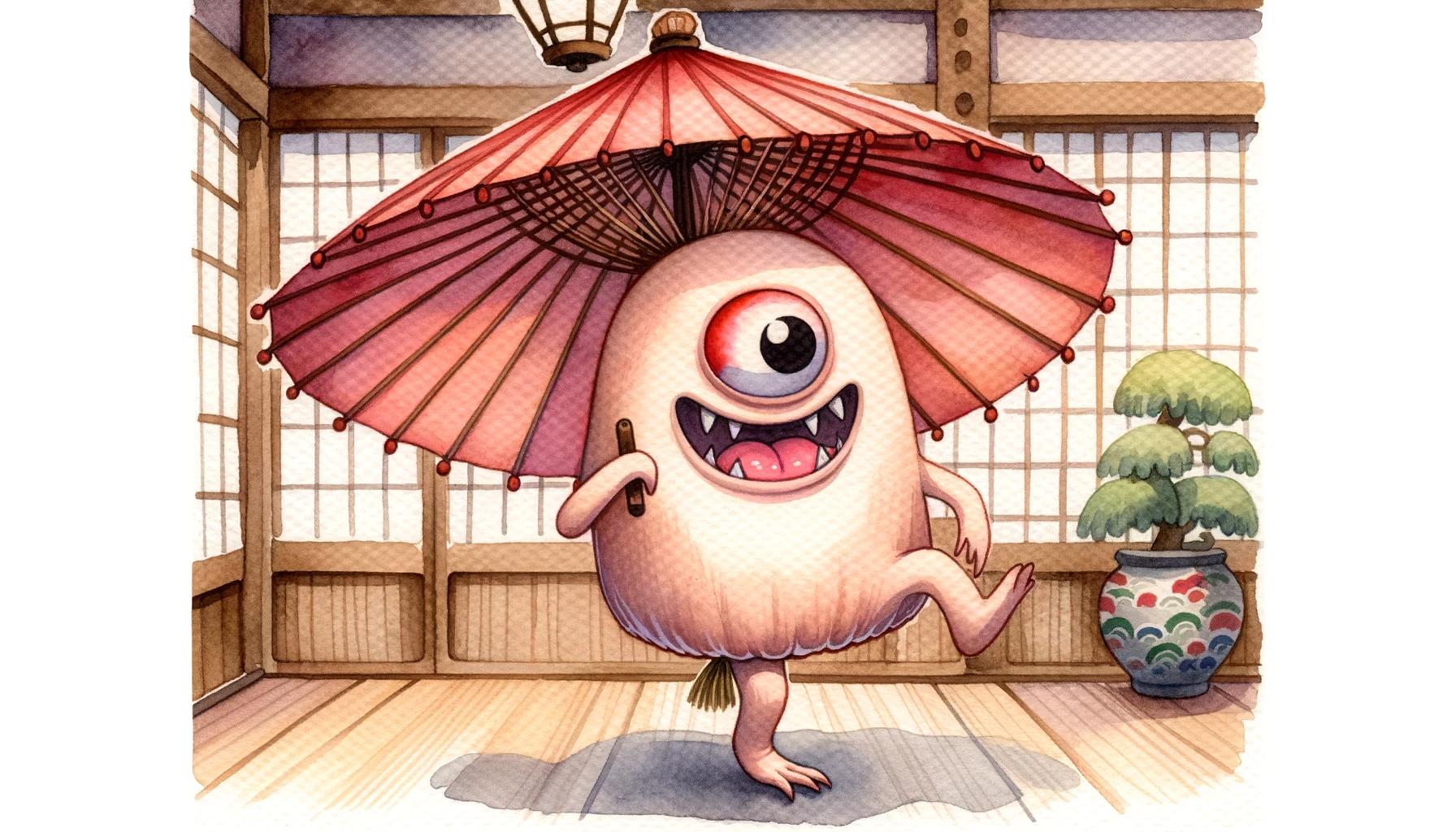Japanese Mythology: Exploring the Legend of Yamata No Orochi

Yamata No Orochi is a legendary creature in Japanese mythology. It is a colossal serpent with eight heads and eight tails, believed to symbolize chaos and destruction. According to the myth, the hero Susanoo encountered Yamata No Orochi and engaged in a fierce battle to defeat it.
This epic tale holds significant cultural importance, reflecting themes of heroism and the triumph of good over evil. Yamata No Orochi’s mythology continues to inspire various interpretations in literature, art, and film, showcasing its enduring legacy in Japanese society and popular culture.
Overview of Japanese Mythology – Yamata No Orochi
In Japanese mythology, Yamata No Orochi is a revered creature known for its mythical presence and captivating legends. This section provides a comprehensive overview of the origins, significance, and various interpretations surrounding the enigmatic Yamata No Orochi.
Origins and Background
The origins of Yamata No Orochi trace back to ancient Japanese mythology, where it is believed to have emerged from the primordial forces of chaos. According to legend, this colossal serpent with its eight heads and eight tails poses a formidable threat to the world, symbolizing the chaos and destruction that must be conquered.
Significance in Japanese Culture
The myth of Yamata No Orochi carries immense cultural significance in Japanese society. It represents the struggle between order and chaos, showcasing the ancient Japanese belief in the triumph of good over evil.
The tale of the hero Susanoo’s encounter with Yamata No Orochi highlights the values of bravery, heroism, and the unwavering determination to protect the people.
Common Depictions and Interpretations
Yamata No Orochi has been depicted and interpreted in various ways throughout history. In Japanese art and literature, it is often portrayed as a fearsome serpent with multiple heads and tails, emphasizing its monstrous nature.
However, some contemporary interpretations also explore the complexity and symbolism behind Yamata No Orochi, delving into themes of duality, balance, and the cyclical nature of creation and destruction.
The Legend of Yamata No Orochi
The legend of Yamata No Orochi is a captivating tale from Japanese mythology.
This mythical serpent, with its eight heads and eight tails, has captured the imagination of many with its power and symbolism. Let’s delve into the intriguing story of Yamata No Orochi and explore its various aspects.
Introduction to the Mythical Serpent
Yamata No Orochi is a fearsome creature that originates from ancient Japanese folklore. It is often depicted as an enormous serpent with multiple heads and tails, a sight both awe-inspiring and intimidating.
Known as the embodiment of chaos and destruction, this legendary serpent holds a significant place in Japanese mythology.
Creation and Powers of Yamata No Orochi
The origins of Yamata No Orochi are shrouded in mystery. According to the myth, it was born from the energy of a dark force, giving it incredible powers and a malevolent nature.
Its immense size and mythical abilities granted it dominance over its surroundings, making it a formidable presence in Japanese folklore.
Encounter with the Hero, Susanoo
The tale takes an intriguing turn when Yamata No Orochi encounters the legendary hero, Susanoo. Susanoo, the brother of the sun goddess Amaterasu, bravely faces the serpent in an epic battle.
This encounter between the hero and the monster sets the stage for a remarkable confrontation that will determine the fate of the land.
Battle and Defeat of Yamata No Orochi
With the fate of the world hanging in the balance, Susanoo gathers his strength and engages Yamata No Orochi in an epic showdown. Their intense battle ensues, with the hero utilizing his cunning and divine weapons to combat and ultimately defeat the mighty serpent.
This victory marks a turning point in the myth, symbolizing the triumph of courage and righteousness over darkness and chaos.
As the legend of Yamata No Orochi continues to resonate throughout Japanese culture, it serves as a reminder of the eternal struggle between good and evil, and the prevailing power of heroism in the face of immense adversity.
Symbolism and Themes in Yamata No Orochi Mythology
Exploring the symbolism and themes within the mythology of Yamata No Orochi provides a deeper understanding of its cultural significance and enduring allure. This section delves into three key aspects:
Representation of Chaos and Order
- The myth of Yamata No Orochi vividly portrays the eternal struggle between chaos and order.
The colossal serpent, with its eight heads and eight tails, symbolizes chaos and represents the forces that threaten harmony and stability.
- The hero Susanoo’s fierce battle against Yamata No Orochi exemplifies the triumph of order and the struggle to bring balance to the world.
By slaying the mythical serpent, Susanoo restores order and asserts the supremacy of good over evil.
- Yamata No Orochi’s depiction as a creature that embodies chaos serves as a cautionary tale, emphasizing the importance of maintaining order and harmony in the face of adversity.
Themes of Heroism and Triumph over Evil
- The legend of Yamata No Orochi showcases the timeless theme of heroism.
Susanoo, as the courageous hero, confronts the fearsome serpent in a daring quest to save the land and its people from destruction.
- Susanoo’s relentless determination, bravery, and strategic prowess allow him to overcome the seemingly insurmountable challenges posed by Yamata No Orochi.
His victory not only represents personal triumph but also symbolizes the collective potential to overcome evil.
- This theme of heroism resonates with audiences, inspiring them to embrace courage, resilience, and the belief in their ability to overcome obstacles and achieve greatness.
Connection to Nature and Creation
- Yamata No Orochi’s association with nature and creation further enriches its symbolism and themes.
The serpent, often associated with natural elements like water and forests, symbolizes the primal forces of the natural world.
- The myth suggests that Yamata No Orochi’s defeat by Susanoo allows for the renewal and regeneration of the land.
By slaying the creature, Susanoo facilitates the continuation of life and the harmonious relationship between humanity and nature.
- This connection to nature underscores the reverence for the environment in Japanese culture and emphasizes the interdependence between humankind and the natural world.
The symbolism and themes embodied in the mythology of Yamata No Orochi provide profound insights into Japanese culture, promoting values such as the preservation of order, the heroic spirit, and the importance of harmonious coexistence with nature.
These enduring themes continue to captivate audiences and serve as a testament to the lasting impact of this legendary creature.
Similarities and Contrasts with Other Myths
The myth of Yamata No Orochi shares intriguing parallels and distinctive differences with other myths from various cultures. Exploring these comparisons not only sheds light on the universal themes found in mythologies but also provides a platform for cultural exchange and understanding.
Let’s delve into some compelling aspects:
Yamata No Orochi vs. Greek Hydra
The legend of Yamata No Orochi bears resemblance to the Greek mythological creature, the Hydra. Both are formidable multi-headed serpents known for their immense power and destructive nature. However, there are key differences between the two.
While the Hydra’s heads multiplied upon being cut, Yamata No Orochi possessed a finite number of heads and tails. Additionally, their encounters with heroes, Susanoo and Hercules respectively, varied in their cultural context and significance.
Comparisons to Serpent Deities in Other Cultures
Yamata No Orochi finds connections to serpent deities in various other cultures as well. In Aztec mythology, Quetzalcoatl, a feathered serpent, shares similarities with Yamata No Orochi in terms of being a powerful and influential creature associated with creation and destruction.
Moreover, serpent deities like Apep in Egyptian mythology and Jörmungandr in Norse mythology exhibit comparable symbolism and roles in representing chaos and cosmic forces.
Cultural Influences and Interactions
The interactions and influences between different mythologies provide fascinating insights. The Yamata No Orochi myth has likely influenced narratives outside of Japan, potentially impacting the development of serpent-related stories and creatures in other cultures.
Conversely, it is also possible that encounters with serpent mythology in other parts of the world influenced the evolution of the Yamata No Orochi myth itself, creating interconnected layers of cultural exchange.
In conclusion, exploring the similarities and contrasts between Yamata No Orochi and other myths uncovers intriguing connections across cultures. These comparative analyses provide a deeper understanding of the universal themes and diverse interpretations found in mythologies worldwide, highlighting the enduring power and significance of these ancient narratives.
Cultural Impact and Legacy
The legend of Yamata No Orochi has left a profound cultural impact on Japan, influencing various artistic, literary, and societal aspects. Its enduring legacy continues to captivate and resonate with audiences across generations.
Influence on Japanese Art and Literature
The myth of Yamata No Orochi has been a recurring theme in Japanese art and literature for centuries. Artists and writers have drawn inspiration from the epic battle, crafting vivid visual representations and weaving intricate narratives.
From ancient scrolls and woodblock prints to contemporary manga and anime, the legend has served as a rich source of creativity and expression.
Yamata No Orochi in Modern Pop Culture
The impact of Yamata No Orochi extends beyond traditional art forms and has permeated modern pop culture in Japan. The legend has been adapted into numerous films, TV shows, video games, and even merchandise.
Its popularity has introduced the myth to new audiences, ensuring its continued relevance and place in contemporary storytelling.
Legacy and Continued Relevance in Japanese Society
The significance of Yamata No Orochi in Japanese society goes beyond its entertainment value. The symbolism and themes embedded within the myth, such as the triumph of good over evil and the connection to nature, continue to resonate with Japanese culture.
The story serves as a reminder of the power of perseverance and the importance of maintaining balance in the face of chaos.
The legend of Yamata No Orochi stands as a cultural touchstone, inspiring creativity, fostering a sense of heritage, and leaving an indelible mark on Japanese society.
Interpretations and Adaptations
The mythology of Yamata No Orochi has sparked various interpretations and adaptations throughout history. This mythical serpent has captured the imagination of artists, writers, and filmmakers, leading to creative reinventions and contemporary artistic representations.
Various Interpretations of the Myth
Yamata No Orochi’s legend has been interpreted in diverse ways, reflecting different cultural perspectives. Some view the creature as a symbol of natural forces and the cyclical nature of life, while others perceive it as a representation of the chaotic aspects of human existence.
Furthermore, there are interpretations that explore psychological and philosophical themes, delving into the concept of inner demons and the triumph over personal challenges.
Reinventions and Recreations in Literature and Film
The powerful imagery and dramatic narrative of Yamata No Orochi’s myth have inspired numerous adaptations in literature and film. From epic novels to gripping screenplays, storytellers have explored different angles and settings, integrating the creature into their own creative worlds.
Some adaptations reimagine the myth in a contemporary context, exploring themes of globalization, environmental issues, or societal conflicts. Others take a more traditional approach, faithfully recreating the ancient tale in all its mythical grandeur.
Contemporary Artistic Representations
Artists continue to be captivated by the visual allure of Yamata No Orochi, resulting in stunning contemporary representations. Paintings, sculptures, and digital artwork showcase the creature, often depicting its immense size and awe-inspiring presence.
Contemporary artists experiment with different artistic styles and mediums, expressing Yamata No Orochi’s symbolism through abstract interpretations, intricate detail, or dynamic compositions. These artistic creations serve as a testament to the enduring legacy of Japanese mythology and its influence on the art world.
See Also
Other Serpent Deities in Japanese Mythology
Japanese mythology is rich with various serpent deities that hold significant roles within the folklore. These deities, similar to Yamata No Orochi, exemplify the intertwining of nature, power, and symbolism in Japanese culture.
Some notable serpent deities include:
- Shirabyoshi: A serpent goddess associated with healing and transformation.
- Orochi: A legendary eight-headed serpent, often interlinked with Yamata No Orochi.
- Uwabami: A divine serpent connected to fertility and agricultural abundance.
Mythical Creatures Associated with Serpents
In addition to serpent deities, Japanese mythology features a diverse range of mythical creatures associated with serpents.
These creatures, often depicted as serpentine or having serpentine attributes, add depth and complexity to the folklore. Some notable examples include:
- Tsuchinoko: A legendary snake-like creature with a stout body and ability to speak.
- Onmoraki: A monstrous bird associated with supernatural occurrences and death.
- Orochimaru: A fictional character from modern Japanese folklore, renowned for snake-related powers.
Famous Serpent Stories in World Mythology
The theme of serpents holds significance not only in Japanese mythology but also in various mythologies around the world.
These stories, showcasing the captivating allure and symbolism of serpents, span different cultures and time periods. Some well-known serpent stories include:
- Greek Hydra: A monstrous serpent-like creature with regenerative abilities, battled by Greek heroes.
- Norse Jörmungandr: A massive sea serpent and one of Loki’s children in Norse mythology.
- Aztec Quetzalcoatl: A feathered serpent deity associated with knowledge, creation, and wind.
.

